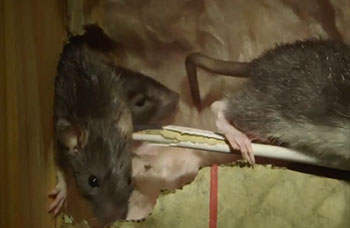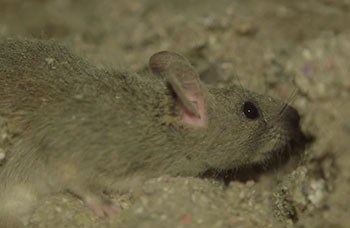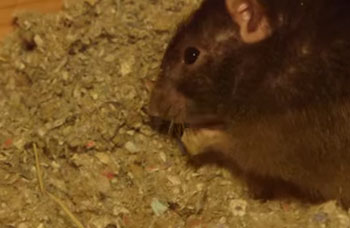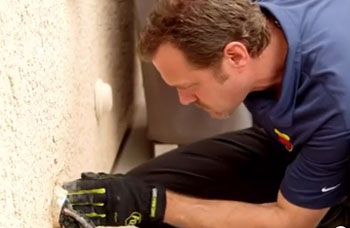Rat Types & Facts
Rat Facts
- Eat about 10 percent of their body weight every day.
- Can spread disease through biting or contact with their fecal matter or droppings.
Rat Photos
-
 Pack rat.
Pack rat. -
 Pack rat.
Pack rat. - View More Photos
How to Get Rid of Rats
People don’t often see rats, but signs of their presence are easy to detect. It’s important to know which species of rat is present in order to choose effective control strategies. A successful rat control strategy typically includes three elements: sanitation measures; rodent proofing; and population control (trapping).
Sanitation measures: The most effective rat control begins with prevention. Trash should be disposed of properly, and sanitary conditions should be impeccably maintained. Both human and pet food is an incentive for rodents and should be kept in tightly sealed containers. Any standing water or moisture leaks should be addressed and/or repaired. Wood piles and other rodent shelter sites such overgrown weedy areas should be eliminated. In order to address an existing rat population, it is necessary to identify and eliminate their feeding, drinking and dwelling sites.
Rodent-proofing your home: The most permanent form of rodent control is to limit food, water, shelter, and access to buildings. Rats are capable of squeezing through holes that appear to be much too small for them (as small as a quarter) so even very small holes should be sealed to prevent entry and reentry of rodents. Prevention begins by implementing the following:
- Seal all possible entry points against rodent entry, such as sewers and air vents;
- Repair or replace damaged ventilation screen around the foundation and under the eaves;
- Provide a tight-fitting cover for the crawl space;
- Seal all openings around pipes, cables, and wires that enter through walls or the foundation;
- Be sure all windows that can be opened are screened and that the screens are in good condition;
- Since rats often enter by climbing trees and coming through broken screens or vents make sure internal screens on roof and attic air vents are in good repair;
- Cover rooftop plumbing vent pipes in excess of 2 inches in diameter with screens over their tops; and
- Make sure all exterior doors are tight fitting and weatherproofed at the bottom.
Population Control: Trapping is the safest and most effective method for controlling rats in and around homes and other structures. Because snap traps can be used over and over, trapping is less costly than poison baits but is also more labor intensive. Although there are a variety of types of traps (e.g., the simple, wooden trap, the newer plastic single kill traps, etc.), finding the best locations to set traps is often more important than what type of trap is used. However, because rats tend to avoid unfamiliar objects, it is often necessary to enlist the services of a local pest control professional when attempting to control an existing rat population.
Attractants may be used to lure rats into traps. However, rats are highly suspicious of anything new that comes into their established foraging paths. Dried fruit, bacon, or a piece of kibbled pet food can be an attractive bait for traps. Fasten the bait securely to the trigger of the trap with light string, thread, or fine wire so the rodent will spring the trap when attempting to remove the food. Soft baits such as peanut butter and cheese can be used, but rats sometimes take soft baits without setting off the trap.
Traps should be placed where rats are, right against the wall in secluded areas where they are seeking shelter and along the runways and trails the rats are traveling. Look for signs of nesting, gnawing, and droppings. Place traps in natural travel ways, such as along walls, so the rodents will pass directly over the trigger of the trap.
Although rodenticide baits are commercially available, they are potentially harmful to humans and pets if not used correctly. When toxic baits are used, rats can die in hard to reach locations such as within walls or ceilings. The stench of a dead/decomposing rat can be unbearable and can necessitate cutting a hole in the wall to remove the carcass. It is best to contact a professional.



